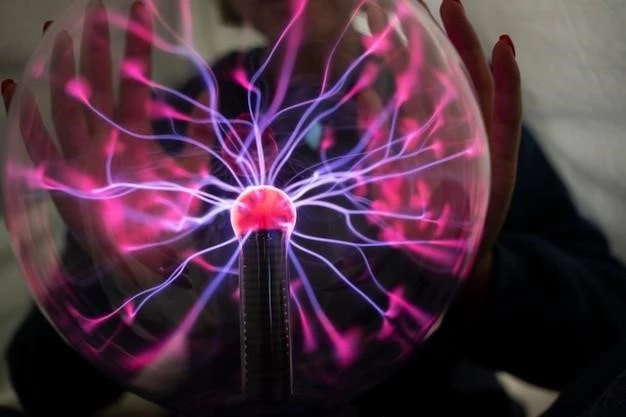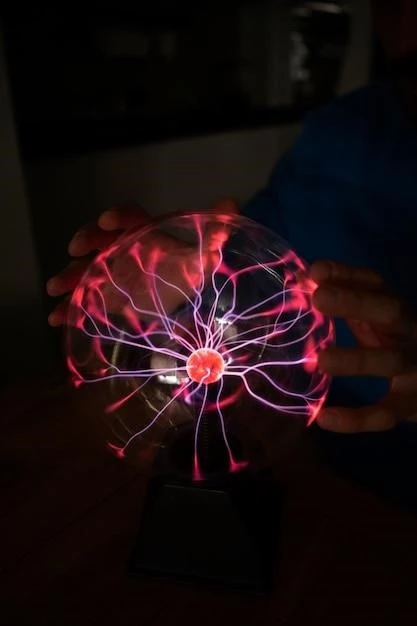Introduction to Centronuclear Myopathy
The centronuclear myopathies are a subgroup of congenital muscle disorders characterized by the abnormal positioning of nuclei in muscle fibers. This mislocation results in muscle weakness and other related symptoms. The condition encompasses various forms‚ each with distinct inheritance patterns and clinical presentations.
Definition and Overview
The centronuclear myopathies are a subgroup of rare‚ genetic muscle disorders characterized by the abnormal positioning of cell nuclei in muscle fibers. These conditions lead to muscle weakness and various associated symptoms. The forms of centronuclear myopathy are differentiated based on their inheritance patterns and clinical manifestations‚ with distinct genetic factors contributing to each subtype’s characteristics and severity.

Forms of Centronuclear Myopathy
The centronuclear myopathies consist of various forms identified by distinct patterns of inheritance and clinical characteristics. These include X-linked myotubular myopathy‚ autosomal dominant centronuclear myopathy‚ and autosomal recessive centronuclear myopathy. Each form presents unique genetic factors contributing to their manifestation and severity.
X-linked Myotubular Myopathy
X-linked myotubular myopathy is a severe form of centronuclear myopathy primarily affecting males. It is characterized by progressive muscle weakness and various neuromuscular symptoms. This subtype is associated with specific genetic mutations that play a key role in the development and severity of the condition.
Autosomal Dominant Centronuclear Myopathy
Autosomal dominant centronuclear myopathy represents one form of the condition inherited in a dominant pattern. This subtype manifests with muscle weakness and atrophy‚ with variability in clinical severity among affected individuals. The genetic factors associated with this form play a crucial role in determining the disease presentation and progression.
Autosomal Recessive Centronuclear Myopathy
Autosomal recessive centronuclear myopathy is a subtype of the condition inherited in a recessive pattern. This form of centronuclear myopathy is characterized by muscle weakness and atrophy‚ presenting variable degrees of clinical severity among affected individuals. The genetic factors specific to autosomal recessive centronuclear myopathy significantly influence the disease’s progression and manifestations.

Clinical Features of Centronuclear Myopathy
Centronuclear myopathy presents with muscle weakness and atrophy‚ with varying severity among individuals. The condition’s clinical features are influenced by genetic factors and can manifest differently even within the same family.
Muscle Weakness and Atrophy
Centronuclear myopathy is characterized by muscle weakness and atrophy‚ representing key clinical features of this condition. The severity of muscle weakness and atrophy can vary widely among individuals affected by centronuclear myopathy‚ impacting their motor function and quality of life.
Variable Severity Among Individuals
Centronuclear myopathy exhibits a spectrum of severity among affected individuals‚ leading to varied clinical presentations within the population. Factors such as genetic variations and environmental influences contribute to the differing degrees of symptom severity observed in individuals with centronuclear myopathy.
Genetic Factors in Centronuclear Myopathy
Centronuclear myopathy is characterized by genetically heterogeneous factors influencing the condition’s presentation. Various genes‚ including DNM2‚ BIN1‚ TTN‚ and MTM1‚ are commonly associated with different forms of centronuclear myopathy‚ highlighting the complex genetic nature of this disorder.
Genetically Heterogeneous Nature
Centronuclear myopathy exhibits a genetically heterogeneous nature‚ with different genetic factors contributing to its various forms and manifestations. The diversity in genetic backgrounds underscores the complexity of centronuclear myopathy and its distinct genetic mechanisms across affected individuals.
Commonly Associated Genes⁚ DNM2‚ BIN1‚ TTN‚ MTM1
The common genes associated with centronuclear myopathy include DNM2‚ BIN1‚ TTN‚ and MTM1. These genes play a significant role in the development and progression of various forms of centronuclear myopathy‚ highlighting the genetic complexity and diversity within this group of muscle disorders.
Diagnosis and Prognosis
Diagnosis of centronuclear myopathy involves muscle biopsy and genetic testing to confirm the specific subtype. The prognosis and clinical severity of the condition can be influenced by a variety of factors‚ including the underlying genetic mutations and age of onset.
Muscle Biopsy and Genetic Testing
Diagnosis of centronuclear myopathy involves muscle biopsy to examine the muscle tissue and genetic testing to identify specific gene mutations associated with the condition. These tests are essential for confirming the diagnosis and determining the subtype of centronuclear myopathy.
Factors Affecting Clinical Severity
Various factors contribute to the clinical severity of centronuclear myopathy‚ including the specific gene mutations identified through genetic testing‚ the age of onset of symptoms‚ and potential environmental influences. Understanding these factors is crucial for predicting disease progression and tailoring management strategies for individuals with centronuclear myopathy.
Treatment and Management Strategies
Centronuclear myopathy currently lacks a specific cure‚ but treatment focuses on managing symptoms and improving quality of life through various therapeutic approaches. Supportive care‚ physical therapy‚ and rehabilitation play essential roles in managing the condition.
Current Therapeutic Approaches
Current therapeutic approaches for centronuclear myopathy focus on symptom management and improving quality of life for affected individuals. These strategies may include physical therapy‚ assistive devices‚ respiratory support‚ and monitoring for potential complications. Research is ongoing to explore novel treatment options for this rare genetic muscle disorder.
Supportive Care and Rehabilitation
In the management of centronuclear myopathy‚ supportive care and rehabilitation play crucial roles in improving quality of life and maintaining optimal muscle function. Supportive care may include assistive devices‚ respiratory support‚ and specialized therapy programs tailored to the individual’s needs. Rehabilitation aims to enhance mobility‚ strength‚ and overall well-being for individuals living with centronuclear myopathy.
Research and Developments in Centronuclear Myopathy
Research in centronuclear myopathy explores the genetic mechanisms‚ clinical manifestations‚ and potential therapeutic interventions for this rare genetic muscle disorder. Recent studies aim to unravel the complexity of the condition and pave the way for innovative treatment strategies to improve outcomes for individuals with centronuclear myopathy.
Recent Studies and Findings
Recent studies on centronuclear myopathy have focused on exploring the genetic mechanisms‚ clinical presentations‚ and potential treatment options for this complex muscle disorder. Findings from these studies provide valuable insights into the pathophysiology of the condition and offer promising avenues for future research and therapeutic development.
Promising Areas for Future Research
Future research in centronuclear myopathy holds promise in exploring novel therapeutic targets‚ advanced genetic technologies‚ and potential gene therapies to address the root causes of the condition. Additionally‚ investigations into personalized treatment approaches and innovative interventions aim to improve outcomes and quality of life for individuals affected by centronuclear myopathy.
Patient Support and Resources
Individuals with centronuclear myopathy can benefit from available assistance programs offering support tailored to their needs. Accessing contact information for additional support‚ including specialized care centers and advocacy groups‚ can provide valuable resources and guidance for managing the challenges associated with this rare genetic muscle disorder.
Available Assistance Programs
Individuals with centronuclear myopathy can benefit from various available assistance programs tailored to provide support and resources for managing the challenges associated with this rare genetic muscle disorder. These programs offer specialized care‚ rehabilitation services‚ and educational resources to help individuals and families navigate the complexities of living with centronuclear myopathy.
Contact Information for Additional Support
Obtaining contact information for additional support can be crucial for individuals with centronuclear myopathy. Accessing resources from specialized care centers‚ advocacy groups‚ and healthcare providers can offer valuable assistance and guidance in managing the challenges associated with this rare genetic muscle disorder. Seeking support from these resources can help improve the overall quality of life for individuals affected by centronuclear myopathy.
Conclusion
In conclusion‚ centronuclear myopathy represents a complex group of rare genetic muscle disorders characterized by muscle weakness and atrophy. Understanding the genetic heterogeneity‚ clinical variability‚ and impact on individuals is crucial for effective management and treatment strategies. Ongoing research and advancements offer hope for improved outcomes and quality of life for individuals living with centronuclear myopathy.
